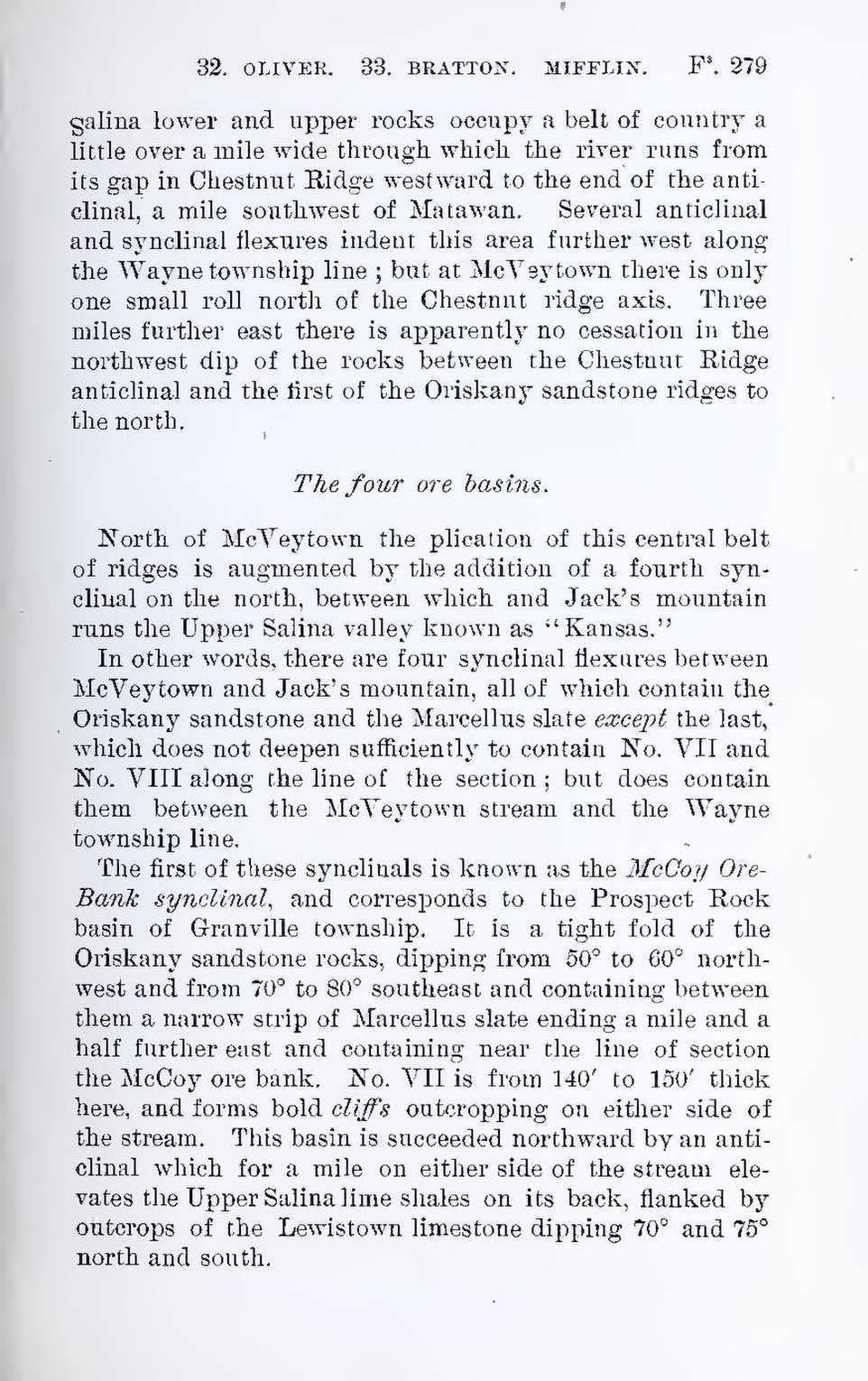Salina lower and upper rocks occupy a belt of country a little over a mile wide through which the river runs from its gap in Chestnut Ridge westward to the end of the anticlinal, a mile southwest of Matawan. Several anticlinal and synclinal flexures indent this area further west along the Wayne township line; but at McVeytown there is only one small roll north of the Chestnut ridge axis. Three miles further east there is apparently no cessation in the northwest dip of the rocks between the Chestnut Ridge anticlinal and the first of the Oriskany sandstone ridges to the north.
The four ore basins.
North of McVeytown the plication of this central belt of ridges is augmented by the addition of a fourth synclinal on the north, between which and Jack’s mountain runs the Upper Salina valley known as “Kansas.”
In other words, there are four synclinal flexures between McVeytown and Jack’s mountain, all of which contain the Oriskany sandstone and the Marcellus slate except the last, which does not deepen sufficiently to contain No. VII and No. VIII along the line of the section; but does contain them between the McVeytown stream and the Wayne township line.
The first of these synclinals is known as the McCoy Ore-Bank synclinal, and corresponds to the Prospect Rock basin of Granville township. It is a tight fold of the Oriskany sandstone rocks, dipping from 50° to 60° northwest and from 70° to 80° southeast and containing between them a narrow strip of Marcellus slate ending a mile and a half further east and containing near the line of section the McCoy ore bank. No. VII is from 140′ to 150′ thick here, and forms bold cliffs outcropping on either side of the stream. This basin is succeeded northward by an anticlinal which for a mile on either side of the stream elevates the Upper Salina lime shales on its back, flanked by outcrops of the Lewistown limestone dipping 70° and 75° north and south.
